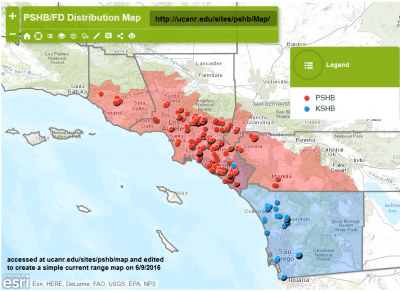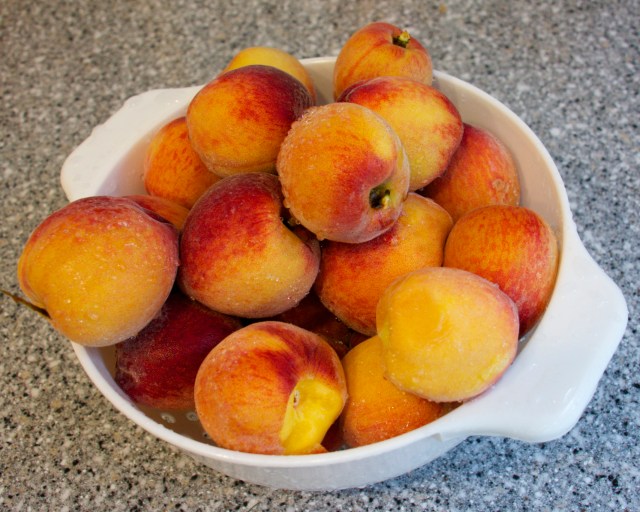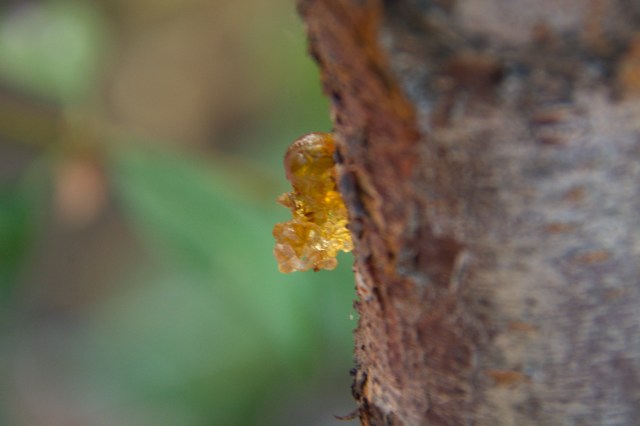We have been infested with a new invasive non-native pest, and it isn’t pretty. This beetle is killing trees all over southern California.
The nasty little insect has the unglamorous name of polyphagous shot-hole borer. Breaking down the name, “poly” means many and “phagous” means eat. This darn beetle eats/infects almost every kind of tree, it seems.
A female beetle bores into trees, leaving a very tiny hole that is about the size of a period in this post. The female beetle carries a particular fungus (Fusarium sp) into the tree with her to feed her babies. The fungus grows and usually kills the trees whether the beetle was able to reproduce or not. The entry holes then weep sap, which makes it easy for the homeowner or grounds person to detect an infected tree.
The female beetle makes a gallery in the wood of the tree, laying eggs, which hatch into larvae. The males and females mature and mate inside the tree, and only fertilized females leave to infest other trees. They carry a bit of the Fusarium fungus with them, infecting new trees.

female polyphagous shot-hole borer photographed by Gevork Arakelian, LA County Agricultural Commissioner
This pest came from southeast Asia (probably Vietnam) to Los Angeles about 2003, and has been spreading like wildfire. I live in Orange County, between LA County and San Diego County. All of those red dots are authenticated polyphagous shot-hole borer infestations. San Diego has a different kind of shot-hole borer (blue dots) that is killing trees down there.

My husband and I live near Huntington Beach Central Park, where many dozens of trees have already been lost and removed. And now we are losing trees in my little orchard, mostly my stone fruit trees.
We have already lost our Santa Rosa plum. It is dead, dead, dead. I think we are going to lose the Panamint nectarine, as it only half leafed out this year, and produced no fruit. The Snow Queen nectarine produced two nectarines this year, but the critters got them both. It is also infected.
My beloved Florida Prince peach tree is fighting back valiantly. It produced a good crop of peaches this year, which had the unfortunate timing of ripening when I was recovering from endometrial cancer surgery in May. I wasn’t able to process all of the peaches, but I did get a few pies and cobblers out of the 2016 crop. Sorry, folks, no pie photos. I was doing good to just be making pies, much less photographing them. It remains to be seen if we will have a 2017 peach crop.

This is a tiny fraction of the Florida Prince peach crop this year.

One of many colanders of peaches this spring.

This shows sap oozing out of multiple holes in our Snow Queen nectarine tree.

Not sure which of my stone fruit trees this is, possibly our Katy apricot. That space alien blob is sap oozing out.

These dark stains are on one of our Liquid Amber shade trees. Both are infected, but I think they are going to survive. Sure hope so, since they are pretty big trees, over 30 years old, and provide nice summer shade to our front yard.
From the University of California Department of Agriculture and Natural Resources, we learn the following:
There are several potential outcomes of a beetle attack.
- Beetle is repelled with no infection. This has been observed in 20 species of trees. Investigators are trying to figure out what features of the tree might repel the beetle.
- Beetle drills into the tree and transmits the fungus, but doesn’t produce offspring. This has been observed in over 50% of the tree species attacked. We don’t know the final outcome of this interaction. Often leakage of xylem fluid is noticed on the trunk and branches. Maybe nothing bad will happen to the tree, but the tree could suffer if the xylem vessels are clogged up, which could cause dieback of branches. Damage could also make the tree more prone to attack from other pest species.
- Beetle drills into the tree, fungus infects the tree, and the beetle produces offspring in the tree. This has been seen in about 8% of the tree species attacked, and these species are considered true host of PSHB, and include box elder, coast live oak, and avocado. Some trees seem to suffer mild symptoms like branch die-back, while others are killed outright.
Because this is a fairly new invasive species, scientists are still learning about it. So far, it has been found to infect 303 species of trees. Some pessimists say that there won’t be any trees remaining in southern California, but I have to hope they are wrong.
Sadly, the beetle can and does infect avocado trees. This could have a major economic impact to the avocado industry in southern California. So far, I haven’t seen any signs of infestation on my avocado tree, nor my citrus, apple, or Asian pear trees. My pomegranate and Fuyu persimmon appear unscathed as well. Fingers crossed.
But I have already lost a plum tree, and I expect to lose all of our peach, nectarine and apricot trees as well. This is a big blow to our effort produce food in our tiny yard, as my fruit crop is about half of the poundage of our produce.
For a PowerPoint presentation showing other trees infested with the beetle, see:
Click to access Polyphagous-Shot-Hole-Borer-update.pdf
Note that the presentation linked above was created in 2008, and the number of tree species known to be susceptible has greatly increased since then.



Hi Lou,
Glad to see you kicked cancer’s ass! This news of the shot Hole Borer is tragic. Peaches and nectarines are my favorite fruit, I was always envious of your trees. Is there any way of preventing infestation? I know one strategy her in Maine for fruit tree pests is painting the trunk white with thinned latex paint. Good luck with this pest, it would be so sad to lost California’s delicious fruits
Ali
LikeLike